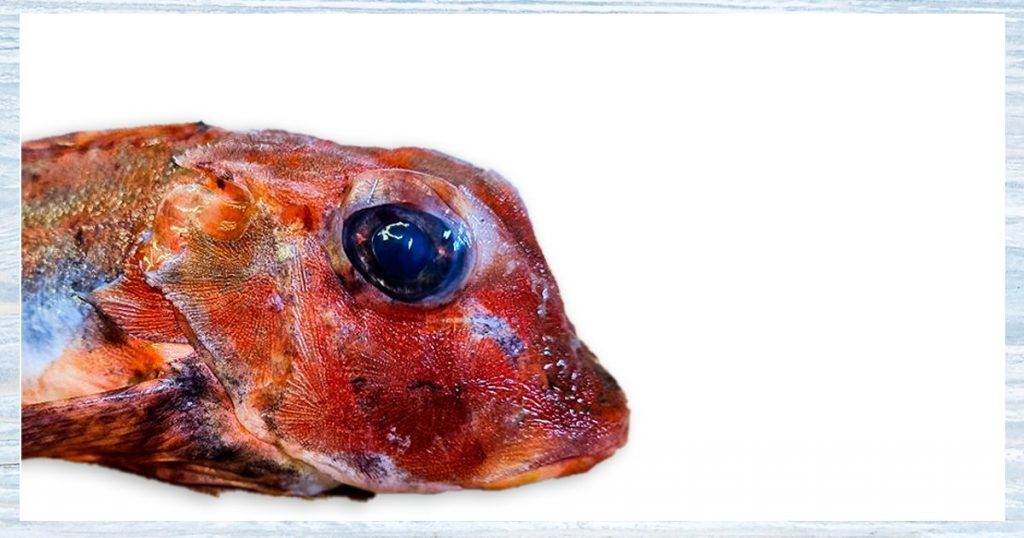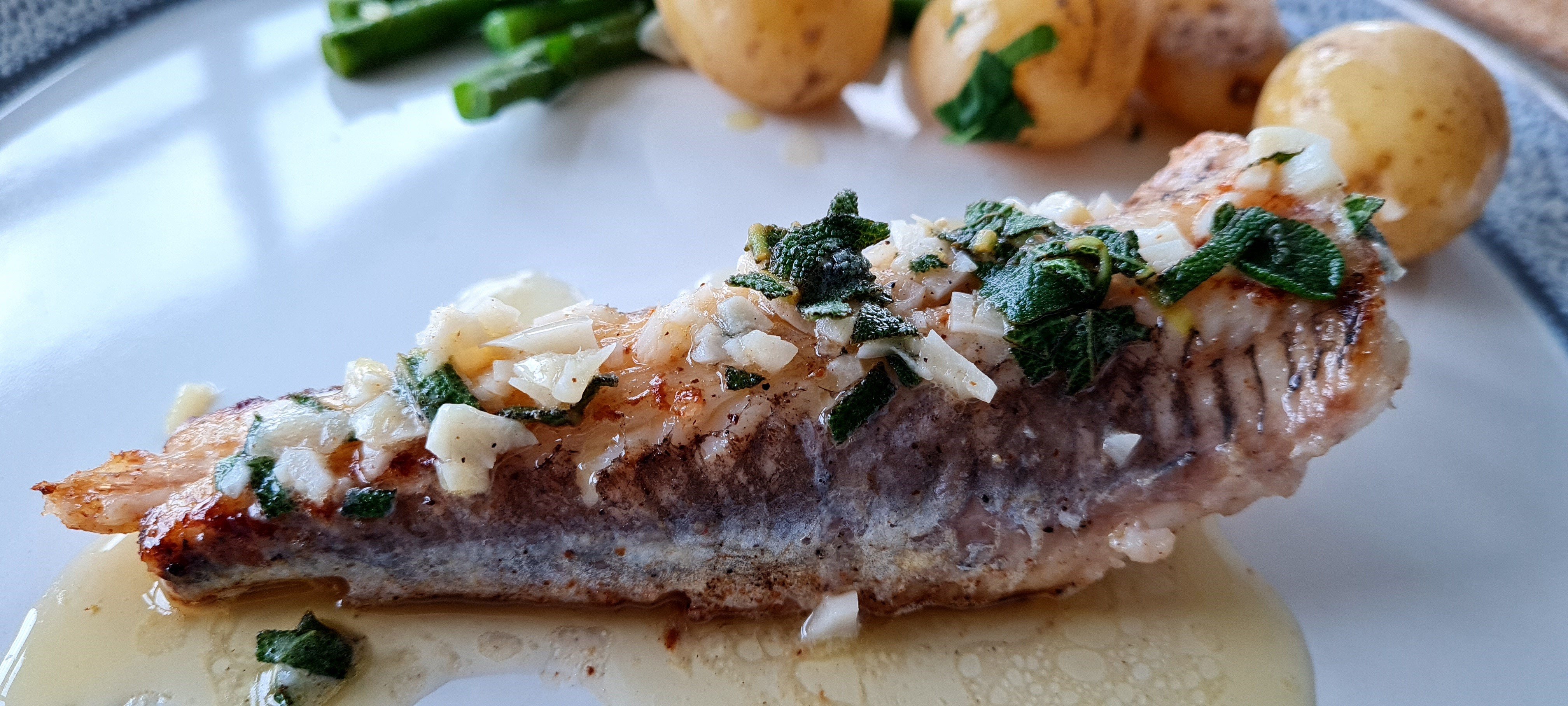
Last updated: 10 May, 2025 @ 12:11
The gurnard is an interesting looking fellow, and there are some excellent gurnard recipes about. With its dinosaur-like face, you’d think it’s one of the most easily identifiable fish of the fishmongers slab, and even most fishmongers chalk it up on their blackboards as ‘gurnard’.
However, you, and us, and the fishmonger are all wrong.
Surprisingly, within our coastal waters there are actually five distinct types of gurnard. Two of these, the streaked gurnard and the piper – the prettiest of all gurnards – are rarely seen on a fishmonger’s slab here in the UK.
The three types of gurnard you’re most likely to find at your fishmongers are the red, the tub (also known as yellow), and the grey. All three make very good eating (scroll down for our favourite gurnard recipes).
Unfashionable for a long time, and deemed suitable only for lobstermen and their pots, gurnards are now consider good eating.
The flesh is firm and flakes away from the bone in large pieces. For a beginner, they can be troublesome to fillet – so we would suggest roasting them whole, stuffed with rosemary or thyme and a good whack of lemon.
Learn your gurnards
The tub gurnard
Mitch Tonks writes in the excellent Fish (read the review of Fish) that the tub gurnard takes its name from the Old English word ‘tubbot’. Unfortunately for the tub gurnard, ‘tubbot’ means short and thick.
Personally, we think they’re beautiful creatures. Its fins are huge, and coloured with magnificent red, green and blue spots. The size and colour also helps to identify the tub gurnard apart from the red and grey gurnard.

The red gurnard
Long before Fish Face Seafood Blog was born, and we were knee-high to grasshopper, we watched an angler catch a red gurnard off Bournemouth Pier.
We were amazed, having never seen such a creature. We’re reminded of that day every time we see a red gurnard at the fishmongers.
Smaller than the tub, but larger than the grey, the red gurnard makes for good eating in stews and bouillabaisse.
However, like the tub and grey gurnard, the red can also be roasted whole, or for those among you who are keen to have a crack at filleting and pin-boning, it’s very good pan-fried.
The grey gurnard
The grey can be distinguished from the tub and red gurnard by its relatively short pectoral fins. It’s also the smallest of the three, growing to a maximum length of 45cm.
Owing to its size, when we do come across a grey gurnard on the fishmonger’s slab we automatically start thinking of cold days and steaming stews and soups.
Gurnard recipes
As I’ve mentioned, the gurnard is perfect for roasting whole. There’s a great recipe for roasted gurnard with sage and pancetta in Mitch Tonks, fish – the complete fish and seafood companion.
Or, something a little different can be found in Alan Davidson’s Mediterranean Seafood in the form of gurnard with Almond Sauce. You can read our review of Mediterranean Seafood or skip that bit and buy the book from Amazon.
Some of our other favourite gurnard recipes include:
- This winter warming recipe for Pot-roasted gurnard by Hugh Fearnley-Whittingstall
- Nathan Outlaw’s superb Fried gurnard with sweetcorn relish and jalapeno mayonnaise
- And this lovely recipe from Valentine Warner for Gurnard with peas and cider
Preparation
Our keenness in cooking a gurnard whole is because we used to fear filleting or skinning the fish. It looked difficult, troublesome – a finger injury waiting to happen.
Preparing gurnard for all types of gurnard recipes is actually pretty easy, and there’s plenty of guides on YouTube.
Any guide from Duncan & Sue Lucas from Passionate About Fish is always useful and their gurnard one is no exception.
Seasonality
As with all fish, try to avoid buying gurnard during breeding season (April – August for greys, May – June for tubs, June – August for reds).
Sustainability
The latest Marine Conservation Society Good Fish Guide rating can be found below: